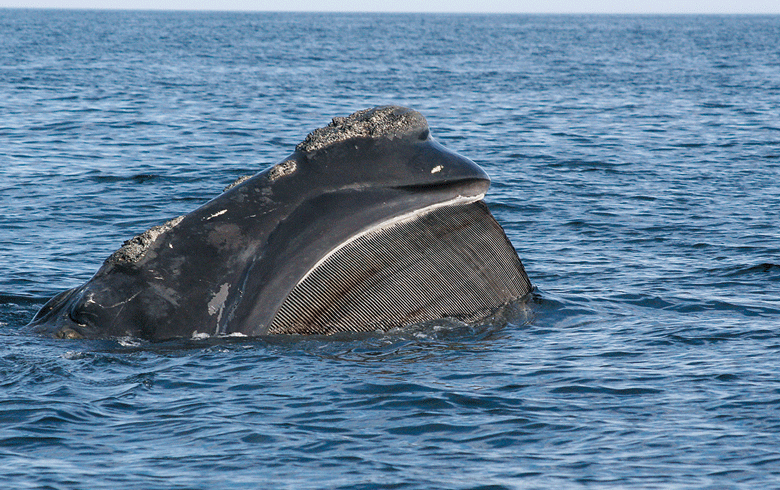A long-anticipated ruling by the National Marine Fisheries Service aimed at protecting the endangered North Atlantic right whale was issued Aug. 30. The ruling impacts Maine’s signature fishery on several fronts.
The key components mean lobster fishermen with federal permits can no longer set traps using vertical buoy lines from October to January in a 967-square-mile area of fishing grounds in the Gulf of Maine. But a new federal rule will allow those fishermen to apply for permits to use “ropeless” gear.
An estimated 62 fishermen from Stonington to Boothbay Harbor are expected to be affected by the closure.
The National Marine Fisheries Service is charged with managing fisheries in federal waters.
An estimated 62 fishermen from Stonington to Boothbay Harbor are expected to be affected by the closure.
The rule is part of the federal Atlantic Large Whale Take Reduction Plan, first implemented in 1997 by a federally convened Atlantic Large Whale Take Reduction Team. It has been modified several times since then.
The plan aims to comply with the Marine Mammal Protection Act and the Endangered Species Act to reduce fishing gear entanglement and vessel strikes on whales throughout their range in the North Atlantic.
Maine’s largest lobster industry association criticized the rule as lacking scientific justification.
The regulations place “an unwarranted burden on the Maine lobster fishery,” the Maine Lobstermen’s Association said in a statement.
The focus of the rule is on North Atlantic right whales because of their status as a critically endangered species, with only an estimated 368 left in the world.
The goal is to reduce or eliminate the number of vertical lines the whales might encounter along their migration routes.
The rule also:
• Closes other offshore waters off Massachusetts to fishing at certain times of year to reduce buoy lines when and where right whales are present. However, fishermen would be able to fish in the areas using ropeless gear.
• Requires fishermen in certain areas to reduce the number of vertical lines by requiring more traps between buoy lines.
• Requires the insertion into buoy lines of links weak enough for whales to break free from the line if whales become entangled.
• Modifies and increase gear marking to introduce state-specific colors to identify the origin of gear that does end up entangling a whale.
NMFS estimates the regulations will result in 69 percent less chance of right whale death and serious injury from entanglement.
The cost to Northeast fishermen in the first year of implementation is expected to be between $9.8 million-$19.2 million, or 1.5 percent to 3 percent of 2019 landings of $650 million. Gear changes will go into effect May 1, 2022, and implementation of the seasonally restricted areas will begin this October.
The costs will be accrued through the time and material it will take to reconfigure gear and markings, and in the impact of reduced catch caused by gear modifications and restricted areas, according to NMFS.
The Maine Lobstermen’s Association said it is committed to actions that recover the right whale but called for a conservation plan “supported by scientific evidence” and includes measures implemented in Canada and by the U.S. shipping industry.
“NMFS has mandated that Maine lobstermen reduce risks to right whales by an additional 98 percent over the next 10 years based on the worst-case scenario, instead of using best available data and realistic assumptions,” the association’s executive director, Patrice McCarron, said in the statement. “The final rule is just the first round of economic impacts to us, and future restrictions will likely destroy Maine’s iconic lobster fishery.”
The association said it does not believe the scientific record supports implementation of the plan, which has a goal to nearly eliminate risk to right whales by 2030.
The association asserted that
• the 967-square-mile area is much larger than it needs to be to reduce risk from the Maine lobster fishery
• gear marking requirements for Maine “will likely require lobstermen to purchase a second set of buoy lines”
• the rule lacks “flexibility for lobstermen to innovate and propose equally protective yet less costly approaches.”
Michael Pentony, a regional administrator for NOAA, acknowledged that Maine fishermen are not solely to blame for right whale deaths.
“I wouldn’t blame it on any one industry group, but it’s a shared responsibility,” he said.
While ropeless fishing is still in trials, the goal in allowing its use in the closed areas is to learn how it might be implemented in the future, said Pentony.
“We recognize the technology isn’t as mature as we’d like in terms of being able to implement it across a widespread basis right now,” he said.
Ropeless fishing provides a remote-control mechanism that uses an acoustic communication system between the fishing vessel and the gear on the bottom to raise the trap. A trap can be pre-set with a lifting device, such as a pop-up buoy, air-filled lift bag, or a buoyant spool. An acoustic signal sent from a digital device on the vessel triggers the release of the lifting device and raises the trap to the surface.
In a joint statement, Maine congressional delegation agreed right whales must be protected, “But we must do so without endangering human lives or livelihoods,” they asserted. “It is unacceptable that Maine lobstermen and women continue to be the primary target of burdensome regulations despite the multiple effective mitigation measures they have taken and the data showing that ship strikes and Canadian snow crab gear pose substantially greater risks to right whales.”
But environmentalists said the rule didn’t go far enough and put too much reliance on weak rope. Adult whales would be able to break away from weak rope entanglements, but calves and juveniles would still be in harm’s way, according to Washington, D.C.-based environmental group Oceana.
“North Atlantic right whales are sliding closer toward extinction due to known, human-caused risks, including fishing gear entanglements,” Whitney Webber, a campaign director with Oceana, said in a separate release.





